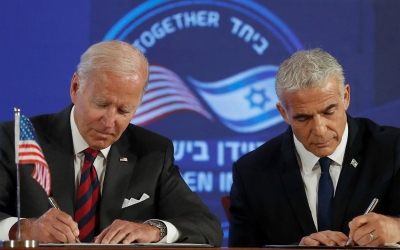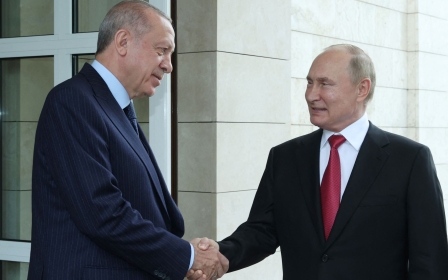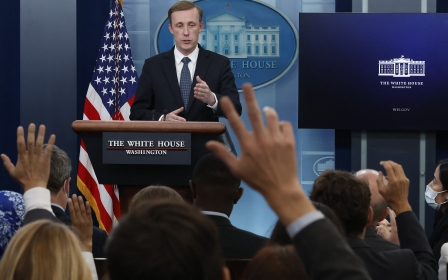Iranian navy announces drone division during Biden's visit to the Middle East

Iran announced on Friday its first naval drone-carrying division in the Indian ocean as US President Joe Biden concluded the first leg of his Middle East trip to rally support to counter Iranian threats, state TV reported.
The report did not say how many vessels, submarines, or drones were included in the division, only that one ship carried 50 drones.
On Monday, US National Security Adviser Jake Sullivan said Washington believed that Iran was preparing to provide Russia with up to several hundred drones, including some that are weapons capable, and that Iran was preparing to train Russian forces to use them.
Iran’s foreign ministry neither confirmed nor denied Sullivan’s statement.
Iranian TV said that the drones displayed on Friday included the Pelican, Arash, Homa, Chamrosh, Jubin, Ababil-4 and Bavar-5.
On Thursday, Biden and Israeli Prime Minister Yair Lapid signed a joint pledge in Jerusalem to deny Iran nuclear arms, an apparent move toward accommodating Israel’s calls for a “credible military threat” by world powers.
During the Biden visit to Jerusalem this week, Biden and Lapid signed a security commitment to counter Iran’s nuclear programme, a concern which has been highlighted over the past year by Israel and several Arab Gulf countries, including Saudi Arabia and the United Arab Emirates.
But asked by Israeli television last week whether his past statements that he would prevent Tehran from obtaining a nuclear weapon meant he would use force against Iran, Biden replied: “if that was the last resort, yes".
Brigadier General Abolfazl Shekarchi, a spokesperson for the Iranian armed forces, was quoted as saying on Friday, “the Americans and the Zionists [Israel] know very well the price of using the word ‘force’ against Iran".
Yet, Iran denies it seeks nuclear weapons, saying that its nuclear program is for peaceful purposes.
Tehran signed a deal with six major powers in 2015 that limited its uranium enrichment program to make it harder to develop weapons in return for relief from billions of dollars worth of sanctions.
But after former US President Donald Trump left the deal in 2018, Tehran resumed some of its nuclear activities.
*Reuters contributed to this report.
Middle East Eye delivers independent and unrivalled coverage and analysis of the Middle East, North Africa and beyond. To learn more about republishing this content and the associated fees, please fill out this form. More about MEE can be found here.





